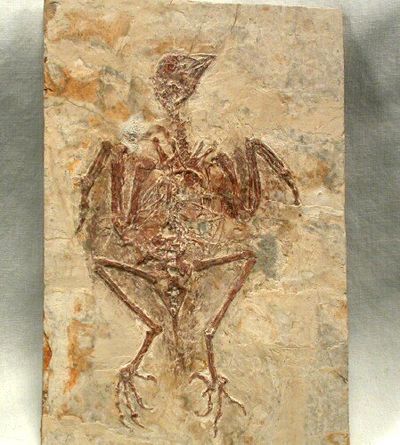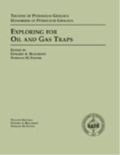Stratigraphic and geographic distribution of fossils
Jump to navigation
Jump to search

| Exploring for Oil and Gas Traps | |

| |
| Series | Treatise in Petroleum Geology |
|---|---|
| Part | Predicting the occurrence of oil and gas traps |
| Chapter | Applied paleontology |
| Author | Robert L. Fleisher, H. Richard Lane |
| Link | Web page |
| Store | AAPG Store |

Rare ancient bird fossil with preserved feathers, Protopteryx fengningensis, from Hebei Province, China. Courtesy The Virtual Fossil Museum.
In essence, paleontologic analysis is based on knowing the distribution of fossil species in time and space. All fossil species persisted for a limited geologic duration and were restricted in habitat to specific paleoenvironments characterized by a range of ecological parameters such as temperature, salinity, dissolved oxygen, and food availability. Because several important parameters vary somewhat systematically with water depth in marine environments, benthic fossils (remains of bottom-dwelling organisms) commonly are used to estimate paleobathymetry for basin modeling and sequence stratigraphy.
See also
- Temporal and environmental distribution of microfossils
- Biogeography
- Paleoclimatology
- Taphonomy and provenance
- Paleoenvironmental analysis
- Paleobathymetry
- Quantitative paleoenvironmental analysis
- Paleogeography